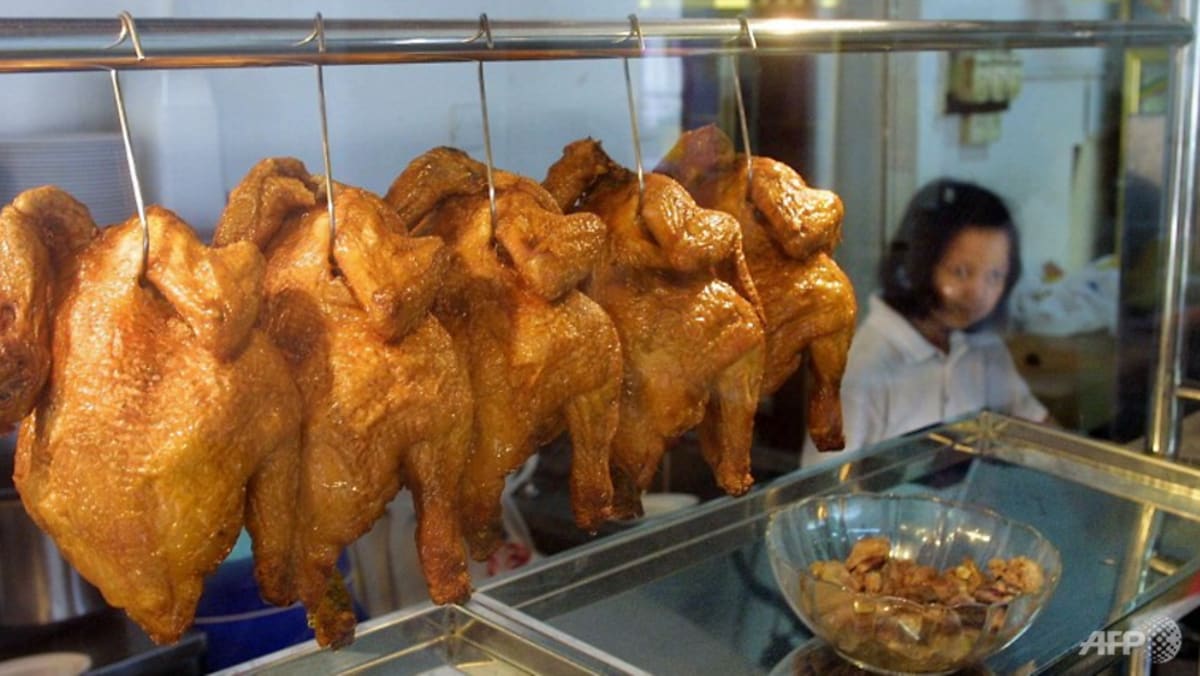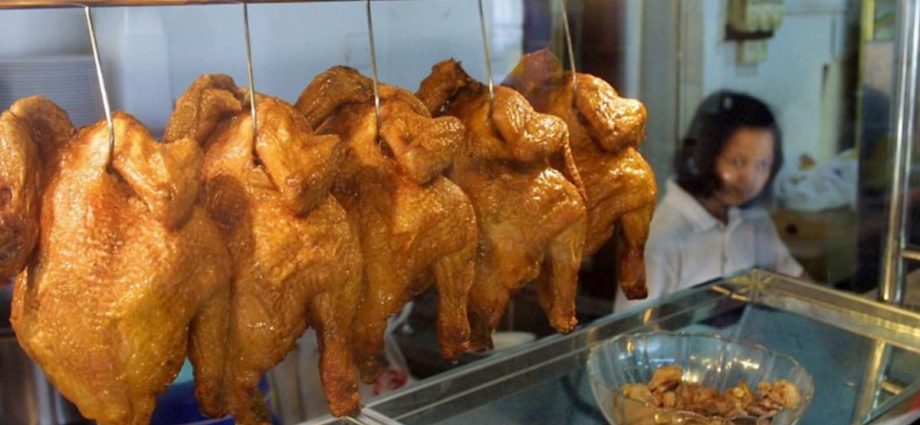
HOW COOKED CHICKEN IS KEPT FRESH
Mr Daniel Tan, the owner of OK Chicken Rice chain – one of those that tested negative for E. coli in Hsu’s Excel sheet – said his chickens are cooked at least three times a day, with only a few cooked each time.
The evidence is in his stall’s gas bill, he said.
“When (the chicken is) hanging there for the next one to two hours it’s still boiling hot, so if you touch it your hands will be burnt,” added Mr Tan.
To maintain a roasted chicken’s temperature for the next two hours, the stall avoids slicing it open.
“We open only two chickens (at one time). So a brand new day starts, you order four drumsticks I’ll sell it to you, after that I’m not going to open anymore until the (sliced chickens) are more or less sold out. So this is how the chicken is kept fresh.”
By Mr Tan’s estimate, once a cooked chicken is sliced into, it can only stay hot for about 15 minutes before the temperature drops and bacteria starts to grow.
Steamed chicken is also cooked in small batches, and each batch kept in clean, sealed ice baths before being served to customers cold.
Cooked chickens are not kept longer than two hours, Mr Tan said.
The owner of Ah Lim Chicken Rice stall in Bedok, who only wanted to be known as Mr Lim, also cooks his meat in batches.
The stall was not tested by the YouTuber Hsu.
Mr Lim cooks four roasted chickens ahead of the lunch crowd, and cooks subsequent batches on demand.
“There are stores that deep fry many and then keep them for the rest of the day,” he said.
“It’s a question about hygiene as well as the food quality. Something that is deep fried in the morning, at night when you eat it, it will taste different.”
Showing CNA his stall’s work space, Mr Lim pointed out potential areas for bacteria growth and described how these were kept clean.
The chopping board used to cut chickens is scraped, wiped or washed throughout the day to prevent scum from accumulating.
Cucumbers are cut and served fresh instead of stored in slices, while condiments such as chilli are made available in small amounts and topped up when necessary, as they tend to turn sour the longer they are kept in containers.
“In a dish like chicken rice, it’s not just the chicken that should command attention,” said deputy director of the Nanyang Polytechnic’s (NYP) school of applied science Richard Khaw. “But also the accompaniments – cucumbers, tomatoes and parsley. As they’re often served raw, they’re particularly prone to contamination if washed with unclean water or left exposed.”
In Mr Lim’s stall, drip trays under displayed chickens are rinsed every hour to prevent oil from collecting.
He said he does not keep chickens displayed throughout the day like other stalls do, in a bid to appeal to customers or show the availability of stock.
Experts CNA spoke to warned that bacteria may grow to high numbers on displayed chickens due to Singapore’s high temperature.
Mr Billy Lu, an outlet manager of a chicken rice stall in Hougang, said he cooks more chickens if neighbouring food stalls are closed, as this would mean greater demand for chicken rice. Any spare or leftover chicken parts are used as soup stock.

